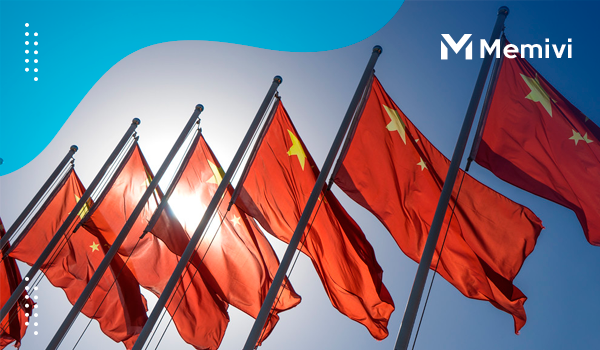
In recent years, China’s influence on the US economy and other countries around the world has been undeniable. As we look towards 2025, the dynamics between China and the US economy are poised to shift in significant ways. From evolving trade relations to technological competition, understanding these changes is crucial for businesses and policymakers alike. In this article, we’ll explore the potential effects of China’s economic strategies and geopolitical moves on the US landscape. Stay informed on the future trends and opportunities that could shape economic growth.
Economic Interdependence and Trade Relations
The intricate economic ties between China and the US have become a cornerstone of global trade. By 2025, these relations are set to reflect even more complexity. Through the export and import of goods such as electronics, machinery, and apparel, both nations have developed a deep-seated trade dependency. China’s role as a leading supplier in the US market cannot be overstated, impacting a wide array of sectors.
The evolution of trade relations between the two countries also encompasses burgeoning service sectors and financial investments. Chinese investments in US businesses provide capital and job creation, while American companies benefit from vast consumer bases within China. This mutual dependency offers growth opportunities but also economic vulnerabilities as changes in policies or economic climates in either country can have ripple effects.
Additionally, increased interdependence challenges both countries to maintain a balanced trade relationship. Despite disputes, trade agreements aim to facilitate smoother economic operations. As both economies gear towards 2025, ensuring strategic cooperation and negotiation will be pivotal for maintaining stability and reaping economic benefits.
Technological Advancements and Competition

The rapid pace of technological advancements has significantly impacted the competitive landscape between China and the US. In recent years, China has heavily invested in emerging technologies such as artificial intelligence, 5G, and quantum computing. These investments have positioned China as a formidable competitor in the global tech arena.
The AI revolution has been at the forefront of this competition. As Chinese companies pour resources into AI research and development, the US must continually innovate to maintain its technological edge. 5G technology is another area of fierce competition. With China’s Huawei playing a pivotal role in developing global 5G infrastructure, the US has responded by bolstering its own networks and imposing restrictions on Chinese tech companies.
China’s ambitions in quantum computing further exemplify the intense rivalry. Achieving breakthroughs in this field could redefine global economic power dynamics, potentially giving China an upper hand in secure communications and complex problem-solving.
For the US, collaboration in technology development with allies, alongside strategic investments, remains crucial. The competition drives innovation, pushing both nations to explore cutting-edge solutions that shape their respective economic futures.
Geopolitical Dynamics and Policy Implications
The geopolitical dynamics play a crucial role in shaping the economic relationship between China and the US. As both nations have significant global influence, their political decisions can have far-reaching effects on the world economy. Changes in leadership, diplomatic strategies, or international alliances can shift the balance, leading to new policies that impact trade and investment.
For instance, tariffs and sanctions are often used as political tools, influencing business operations and market stability. Such measures can raise costs for companies and consumers on both sides, affecting economic growth. Additionally, geopolitical tensions may lead to a reallocation of resources, driving countries to seek alternative trading partners.
Shaping Policies
Policymakers are keenly aware of these dynamics and must craft strategies that protect national interests while fostering international cooperation. It’s crucial to engage in multilateral dialogues, addressing concerns such as cybersecurity and intellectual property rights. By understanding these dynamics, the US can better position itself in negotiations, ensuring that new policies bolster rather than hinder economic progress.
The interplay of politics and economy requires diligent monitoring. Analysts and businesses alike must stay informed about geopolitical shifts, adapting strategies to mitigate risks and capitalize on emerging opportunities. Through strategic partnerships and thoughtful policy-making, both China and the US can navigate these complexities successfully.
Future Trends and Opportunities for Growth
As we look ahead to the year 2025, the economic landscape is poised for transformative changes. China’s influence on the US economy continues to grow, with several emerging trends reshaping the future of global commerce.
China’s continued investment in cutting-edge technologies is not only enhancing its domestic economy but also creating significant opportunities for global collaborations. The rise of sectors such as artificial intelligence, green energy, and biotech are examples where the US and China could develop synergies for mutual benefit. Companies that can navigate these changes effectively may find new markets and partners in these areas.
As China prioritizes sustainability and environmental policies, there lies potential for the US and China to collaborate on initiatives that tackle climate change. Such cooperation could lead to economic benefits, driving both innovation and job creation in both countries.
Moreover, the increasing urbanization in China offers US companies unique opportunities in real estate, infrastructure, and urban planning. These developments could spark further investment flows and knowledge exchange.
While challenges in the geopolitical arena persist, businesses that stay attuned to policy shifts and adapt their strategies accordingly are likely to find themselves at the forefront of these opportunities.
Navigating these emerging trends requires agility and foresight. Both nations have the potential to drive economic growth if they recognize and capitalize on these evolving dynamics.


 A Newcomer’s Guide to U.S. Banking <p class='sec-title' style='line-height: normal; font-weight: normal;font-size: 16px !important; text-align: left;margin-top: 8px;margin-bottom: 0px !important;'> Navigating the U.S. banking system as a newcomer can be challenging yet rewarding </p>
A Newcomer’s Guide to U.S. Banking <p class='sec-title' style='line-height: normal; font-weight: normal;font-size: 16px !important; text-align: left;margin-top: 8px;margin-bottom: 0px !important;'> Navigating the U.S. banking system as a newcomer can be challenging yet rewarding </p>  Is Your Savings Account Losing You Money? <p class='sec-title' style='line-height: normal; font-weight: normal;font-size: 16px !important; text-align: left;margin-top: 8px;margin-bottom: 0px !important;'> Is your savings account actually losing you money? It may sound surprising, but traditional savings accounts can sometimes result in financial losses over time </p>
Is Your Savings Account Losing You Money? <p class='sec-title' style='line-height: normal; font-weight: normal;font-size: 16px !important; text-align: left;margin-top: 8px;margin-bottom: 0px !important;'> Is your savings account actually losing you money? It may sound surprising, but traditional savings accounts can sometimes result in financial losses over time </p>  Your Ultimate Dashboard: The Best Apps for Managing Your Money <p class='sec-title' style='line-height: normal; font-weight: normal;font-size: 16px !important; text-align: left;margin-top: 8px;margin-bottom: 0px !important;'> Dive into unparalleled insights and efficiency enhancements </p>
Your Ultimate Dashboard: The Best Apps for Managing Your Money <p class='sec-title' style='line-height: normal; font-weight: normal;font-size: 16px !important; text-align: left;margin-top: 8px;margin-bottom: 0px !important;'> Dive into unparalleled insights and efficiency enhancements </p>